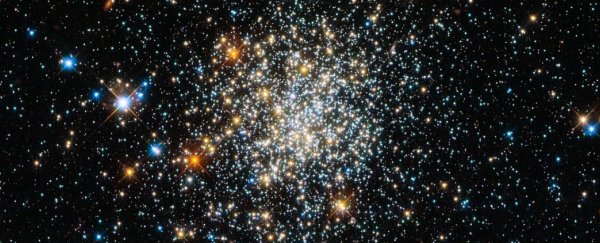Throughout the Universe there are super-dense clusters of stars, known as globular clusters, orbiting large galaxies. Although astronomers have observed plenty of these clusters, each of which contain around a million stars bound tightly together, they know very little about where and how, and in the case of those orbiting distant galaxies, when they formed.
Until now, it was believed that the stars were older than galaxies, and may have formed close to the birth of the Universe, 13.7 billion years ago. But new research led by Swinburne Universe of Technology in Australia has found that the majority of globular clusters actually formed in two distinct periods - 12.5 billion years ago, and 11.5 billion years ago.
This makes the globular clusters super old, but actually slightly younger than astronomers originally thought. "We now think that globular clusters formed alongside galaxies rather than significantly before them," lead researcher Duncan Forbes said in a press release.
The team's information came from years of data captured by the Keck II telescope in Hawaii, using the DEIMOS spectrograph. This spectrograph breaks down the visible wavelengths of objects captured by the telescope into spectra, which provides insight into their chemical composition. The astronomers used these data to compare the chemical composition of the globular clusters to the composition of the Universe as it changes over time, and reverse-engineered their ages.
They found that the globular clusters formed on average between 1.2 and 2.2 billion years after the Big Bang. The results have been published in the Monthly Notices of the Royal Astronomical Society, and will provide new insight into the formation of the star groups.
For example, this new age estimate means that the globular clusters managed to avoid the period in the Universe's history called cosmic reionisation, during which the Universe was bathed in a whole heap of ultra-violet radiation that could have destroyed the star clusters before they formed.
"Now that we have estimated when globular clusters form, we need to tackle the questions of where and how they formed," said Forbes.
Want to explore the Universe with your research? Find out more about studying at Swinburne.
